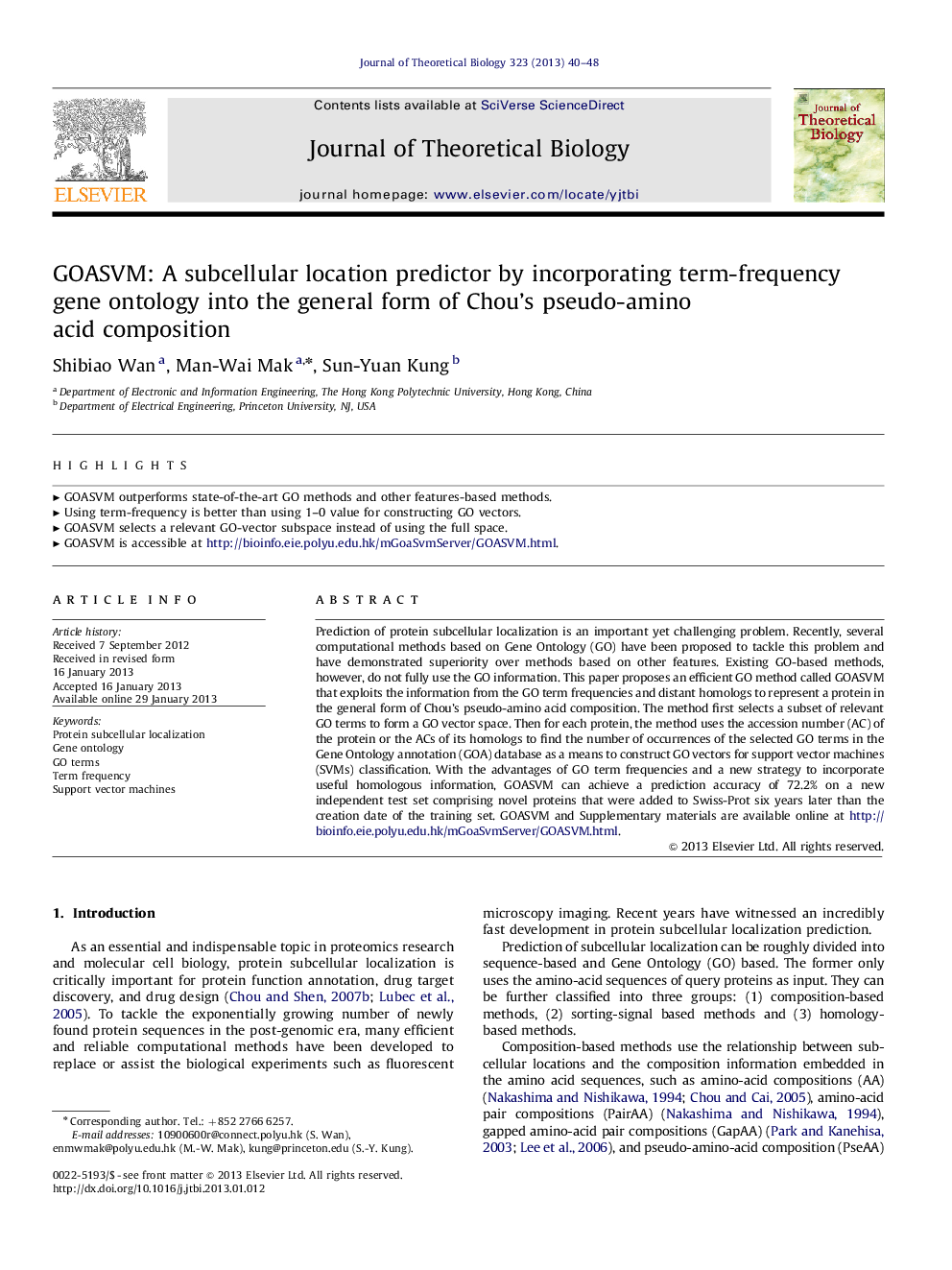| Article ID | Journal | Published Year | Pages | File Type |
|---|---|---|---|---|
| 4496454 | Journal of Theoretical Biology | 2013 | 9 Pages |
Prediction of protein subcellular localization is an important yet challenging problem. Recently, several computational methods based on Gene Ontology (GO) have been proposed to tackle this problem and have demonstrated superiority over methods based on other features. Existing GO-based methods, however, do not fully use the GO information. This paper proposes an efficient GO method called GOASVM that exploits the information from the GO term frequencies and distant homologs to represent a protein in the general form of Chou's pseudo-amino acid composition. The method first selects a subset of relevant GO terms to form a GO vector space. Then for each protein, the method uses the accession number (AC) of the protein or the ACs of its homologs to find the number of occurrences of the selected GO terms in the Gene Ontology annotation (GOA) database as a means to construct GO vectors for support vector machines (SVMs) classification. With the advantages of GO term frequencies and a new strategy to incorporate useful homologous information, GOASVM can achieve a prediction accuracy of 72.2% on a new independent test set comprising novel proteins that were added to Swiss-Prot six years later than the creation date of the training set. GOASVM and Supplementary materials are available online at http://bioinfo.eie.polyu.edu.hk/mGoaSvmServer/GOASVM.html.
► GOASVM outperforms state-of-the-art GO methods and other features-based methods. ► Using term-frequency is better than using 1–0 value for constructing GO vectors. ► GOASVM selects a relevant GO-vector subspace instead of using the full space. ► GOASVM is accessible at http://bioinfo.eie.polyu.edu.hk/mGoaSvmServer/GOASVM.html.
